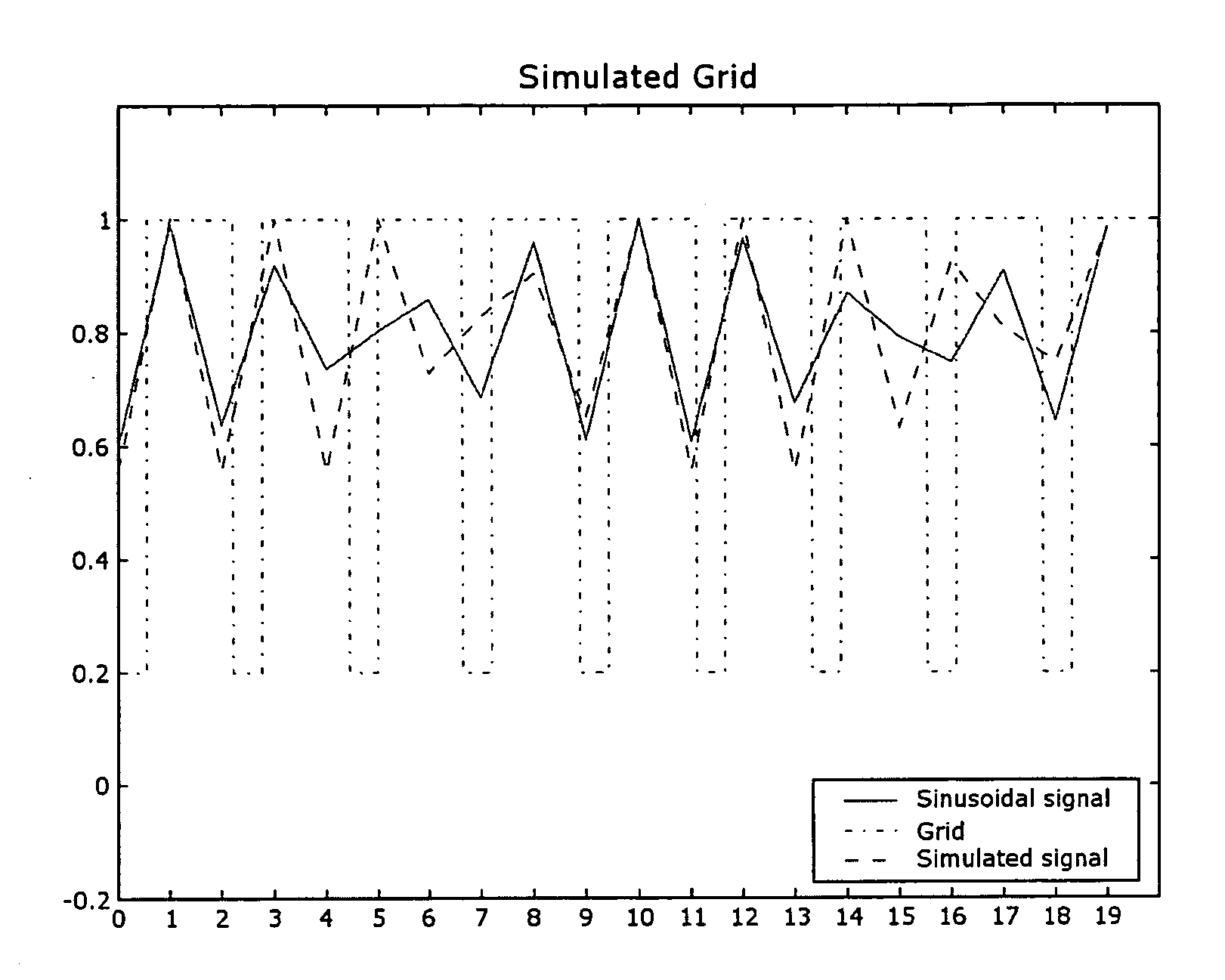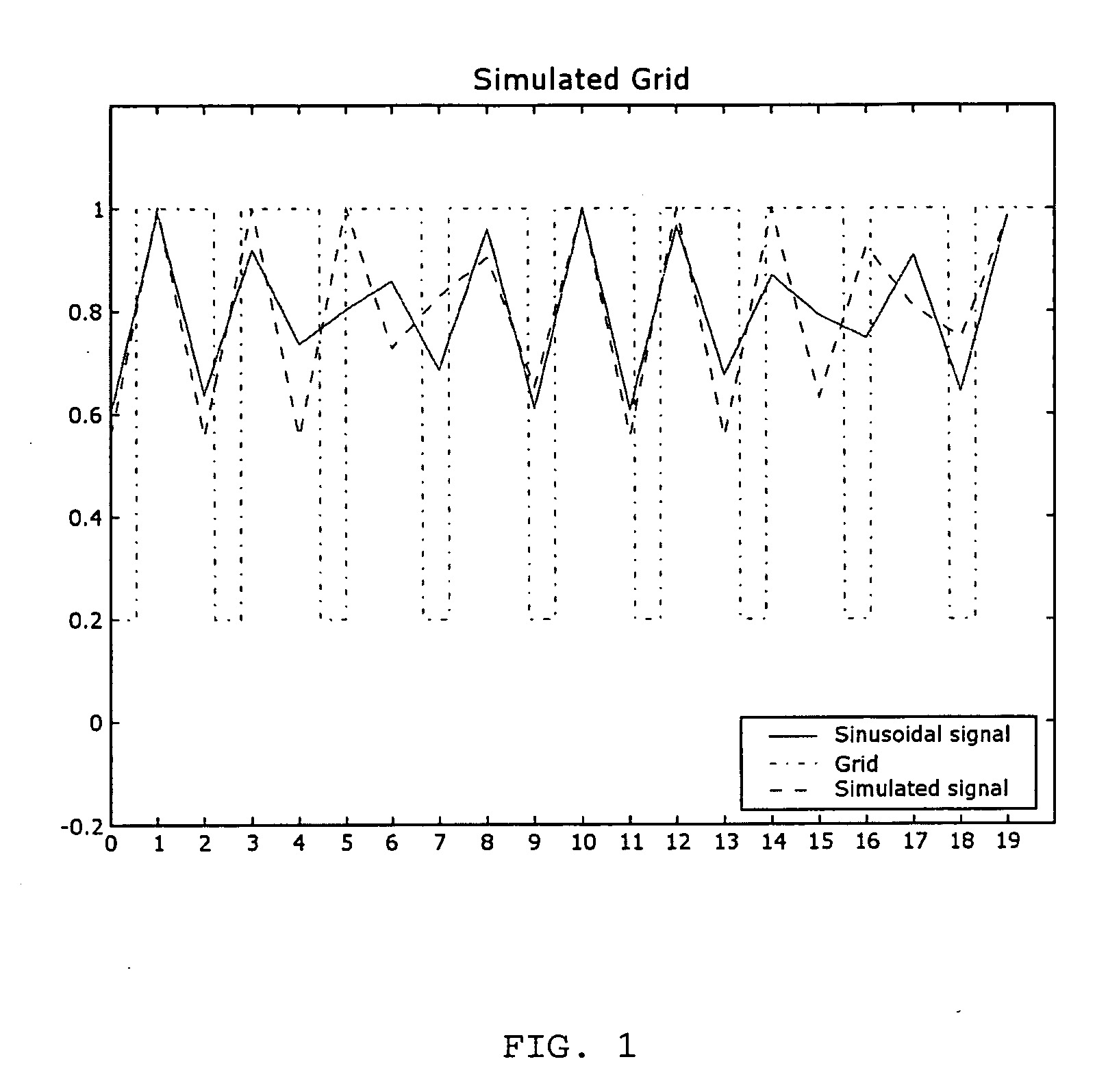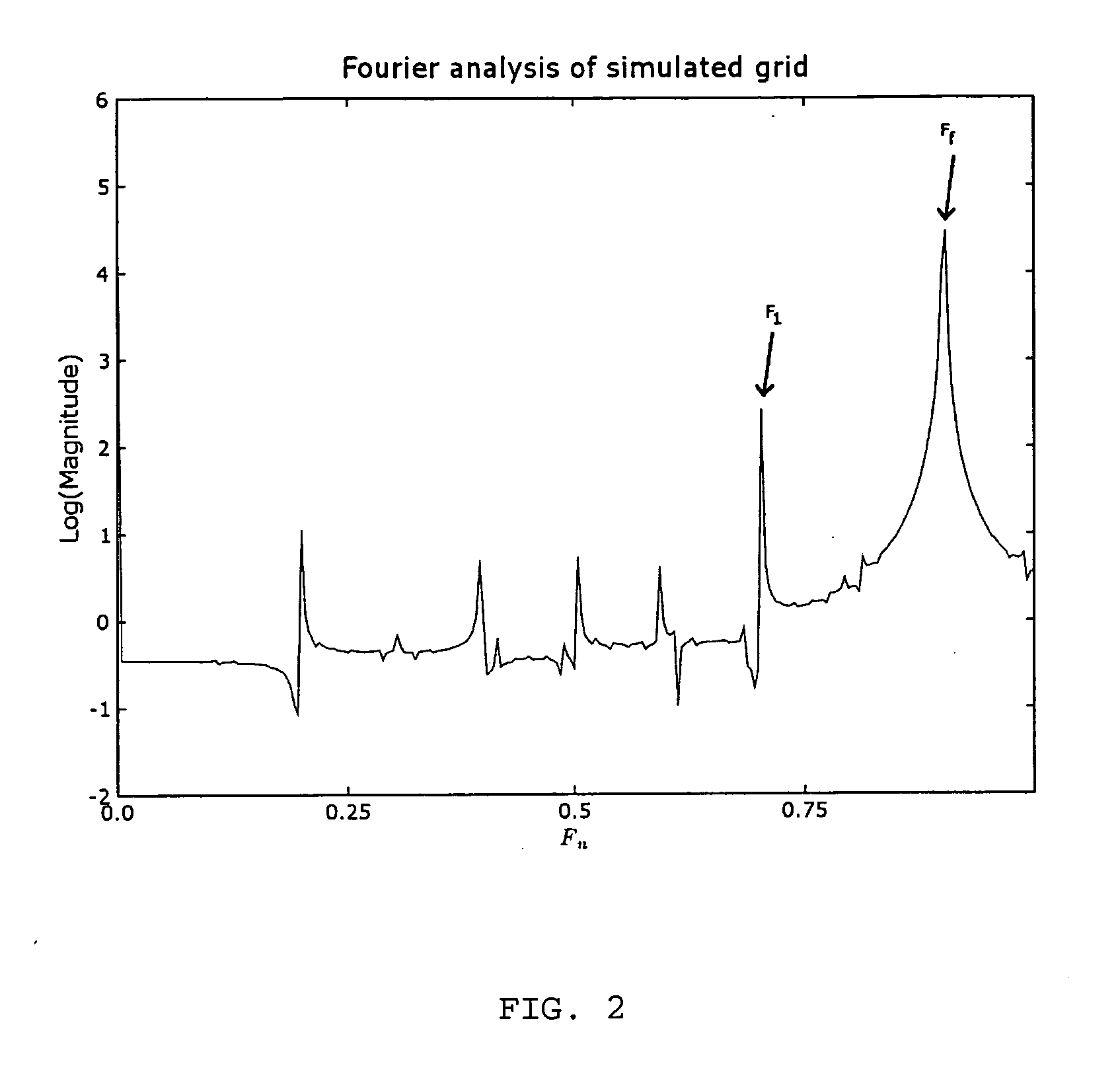Method of identifying disturbing frequencies originating from the presence of an anti-scatter grid during acquisition of a radiation image
a radiation image and anti-scattering technology, applied in the field of identifying disturbing frequencies, can solve the problems of introducing artifacts such as grid lines into the image, and artifacts remain, and achieve the effect of removing annoying moiré artifacts
- Summary
- Abstract
- Description
- Claims
- Application Information
AI Technical Summary
Benefits of technology
Problems solved by technology
Method used
Image
Examples
Embodiment Construction
[0017] A specific embodiment of the method of the present invention will be described hereinafter.
[0018] The input of the method is the fundamental frequency or period of the anti-scatter grid in an x-ray image of the grid.
[0019] In the context of the present invention the x-ray image of the grid is obtained by means of a computed radiography system. The grid is irradiated by means of x-rays. The radiation image of the grid is stored in a radiation detector such as a photostimulable phosphor screen. The image is then read out in a read out device (also called digitizer) by scanning the screen with stimulating radiation. Image-wise modulated light emitted by the exposed screen upon stimulation is detected and converted into a signal representation.
[0020] The signal representation is analysed and the frequency at which the signal of the anti-scatter grid has maximum amplitude, hereinafter called the fundamental frequency Ff, with corresponding period Pf, is detected. This fundament...
PUM
 Login to View More
Login to View More Abstract
Description
Claims
Application Information
 Login to View More
Login to View More - R&D
- Intellectual Property
- Life Sciences
- Materials
- Tech Scout
- Unparalleled Data Quality
- Higher Quality Content
- 60% Fewer Hallucinations
Browse by: Latest US Patents, China's latest patents, Technical Efficacy Thesaurus, Application Domain, Technology Topic, Popular Technical Reports.
© 2025 PatSnap. All rights reserved.Legal|Privacy policy|Modern Slavery Act Transparency Statement|Sitemap|About US| Contact US: help@patsnap.com



